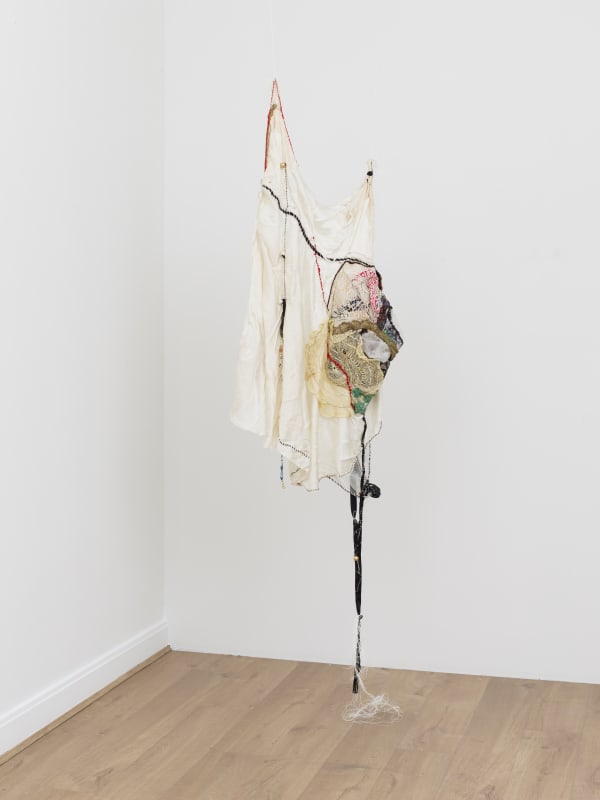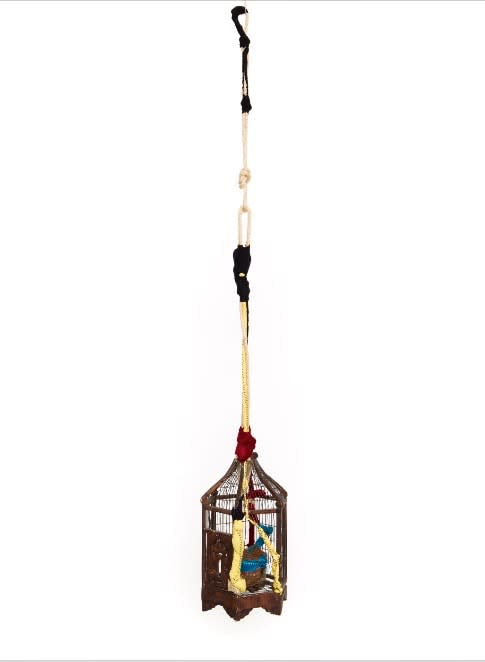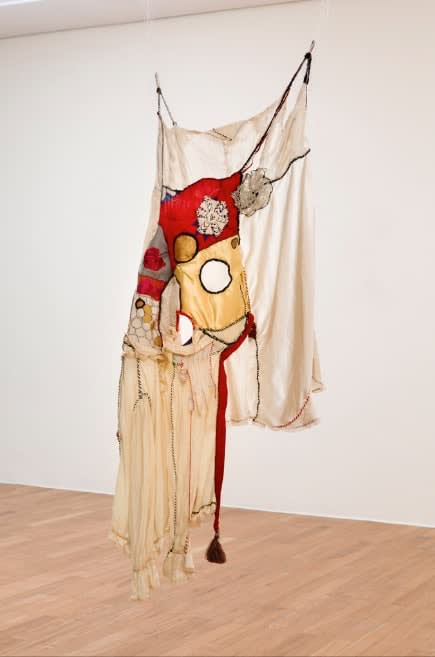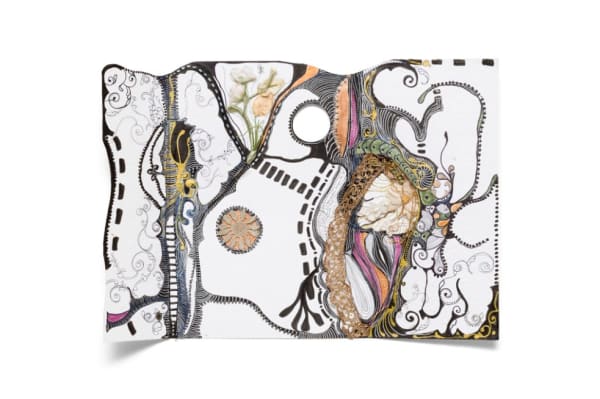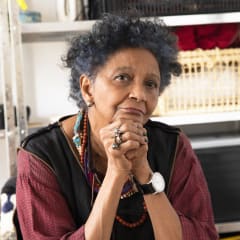Lines in Wefts Sonia Gomes
Weaving the Morning
João Cabral de Melo Neto
One rooster does not weave a morning,
he will always need the other roosters,
one to pick up the shout that he
and toss it to another, another rooster to pick up the shout that a rooster
before him and toss it to another,
and other roosters with many other roosters to criss-cross
the sun-threads of their rooster-shouts
so that the morning, starting from a frail cobweb,
may go on being woven, among all the roosters.
And growing larger, becoming a cloth,
pitching itself a tent where they all may enter,
inter-unfurling itself for them all, in the tent
(the morning) which soars free of ties and ropes –
the morning, tent of a weave so light
that, woven, it lifts itself through itself: balloon light.
In Lines in wefts, Sonia Gomes revisits the gallery with an exhibition in which the main piece Weaving the Morning I, II, III is structured in three nightgowns that were donated by a friend, who, after the decision to sell the family home, was permitted by the matriarch to give away her old bridal garments. Despite the matriarch's humble origins (the story goes that she's the daughter of a bricklayer), the garments are sophisticated, with pieces of hand-embroidered linens. Kept in storage for many years, these pieces came to Sonia already imbued with personal history. Any attempt at intervention requires the artist to be forever mindful from a point of view of extreme respect for the pieces, for the secrets they contain, for the time that has passed and is now gone forever, but which in their time were symbolic of a woman's rite of passage. This is how the aesthetic experience in Sonia Gomes's work begins.
The nightgowns were transformed into canvases for delicate drawings made of lines, pins, embroidery, and so on. Suspended from the gallery ceiling by kite strings, the nightgowns gain autonomy in the space, parading their colors; like canvases they put forth the artist's drawings, which require the existence of the other, a second place where she, the artist, can weave her expression. Always concerned with the movement of the fabrics, in order to finalize the work, she has also made it necessary to maintain the instability of the original piece; the nightgowns are not attached to a rigid structure. The process is governed by the artist's intuition, by her assiduous concern with the elevation not only the material in this case silk but also the object which has leant itself as medium. A way of breathing new life into something which seemed asleep.
Sonia Gomes (1948, Caetanópolis, Minas Gerais) lives and works in Belo Horizonte. Her solo exhibitions include: Histórias/Histórias: Arte Contemporânea do Brasil, USF Museum of Contemporary Art, Florida (2016); No Man’s Land: Women Artists from the Rubell Family Collection, Rubell Family Collection, Miami (2015/2016); All the World's Futures, 56 Biennale di Venezia, Venice (2015), The Hand New afro-brasileira, Museu Afro Brasil, São Paulo (2013); Art & Têxteis, Kunstmuseum Wolfsburg, Wolfsburg (2013).

